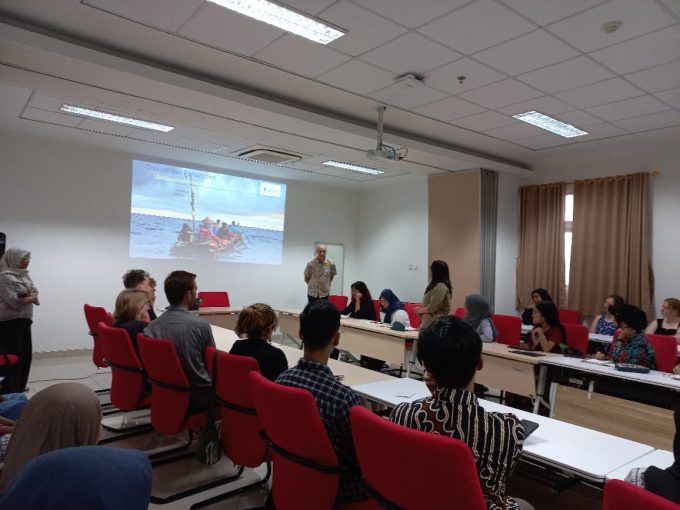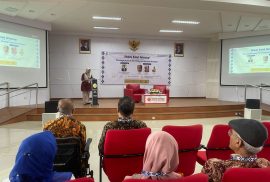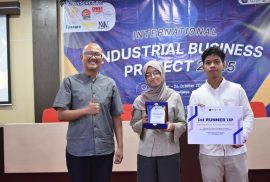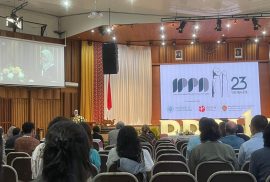
The Department of Archaeology, Faculty of Cultural Sciences, Universitas Gadjah Mada successfully held a public lecture entitled “Paddling a Bamboo Raft from Rote to Australia” at Soegondo Building S721 on Thursday, August 28, 2025. The lecture featured three speakers who presented their experimental findings: Glenn Marshall, a geologist from Australia, along with Daniel Mooy and Estafanus Benggu, local community members from Rote.
The lecture discussed long-distance human dispersal across water routes, such as from the Indonesian archipelago to Australia, which has long been a major question. This was the core issue the three speakers sought to address, followed by a brief discussion with archaeology students and participants from various disciplines. They aimed to investigate how humans first arrived in Australia 65,000 years ago and the role of ancestral stories from Oeseli Village, Rote.
Several possible departure points from the Indonesian islands to Australia were considered, with Rote Island being one of them. The crossing was attempted using a bamboo raft and wooden paddles, built collaboratively by the people of Rote. The expedition was carried out systematically, taking into account several factors: ancient sea levels and island boundaries, wind, waves, as well as the materials and dimensions of the raft.
Although the research has not yet been able to confirm the successful ocean crossing from Rote to Australia—since many determining factors still need to be recalculated—this experimental archaeology project marks an important step toward uncovering the possible routes of migration, the methods of human seafaring across oceans, and, on a larger scale, the reasons behind such intentional movements.




